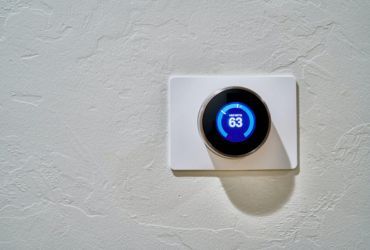Clogged Drains: Common Culprits that Cause Household Clogs
Tired of dealing with pesky household clogs? The first step is to learn what’s causing them. The reality is there are a variety of items that could be responsible for clogged drains, but there are a few that are more likely than others.
Cummings Plumbing Heating & Cooling, a plumbing and HVAC company located in Tucson, Arizona, provide their insight into the most common culprits of clogged household drains.
Hair
The number one clogged drain culprit? You guessed it — hair! According to Cummings Plumbing, hair is one of the most common causes of a clogged drain, especially a shower or bathtub drain. This is because when hair becomes wet, such as when you’re taking a shower, it is able to attach itself to almost anything — and this includes pipes and drains. Over time, a build up of hair can result in a large back up. In part, this is because not only does the hair build up, but the strands then have the ability to stick to or “catch” other common drain cloggers, such as residue from soap. Luckily, there is a way to avoid hair clogs in the future. You can easily find screens or special filters for the top of the drain to keep the hair out. These drain covers will allow the water through, but keep the hair out, so at the end of your shower you can discard your hair in the garbage or compost, preventing it from getting sucked down the drain.
Grease and Oil
Another common culprit for household clogs is grease. Grease and oil are often responsible for a kitchen sink clog. This is because, similar to hair, grease will stick to anything, which is a recipe for disaster when it comes to pipes. The grease or oil will harden as it cools, sticking to the pipe, and on top of that, it will stick to food or other items that end up going down your drain, resulting in a major build up. Unfortunately, there is no magic trick when it comes to grease in a drain, the simplest way to avoid this type of clog is to simply not put grease down the drain. Cummings Plumbing of Tucson, Arizona, recommends disposing of grease or oil the same way you would household chemicals (i.e. pouring the substance into a disposable container and throwing it in the garbage).
Non-Degradable Food
Many people fail to realize that not all food is suitable to go down your sink. In fact, there are many foods, even those that are biodegradable, that can cause clogs in your pipes. In addition, any foods that have trouble being ground up in your garbage disposal should not go down your sink. These include eggshells, uncooked pasta, nuts, or other high fiber foods. Cummings Plumbing of Tucson, Arizona, warns that in addition to clogged pipes, putting non-degradable food down your drain can also lead to some pretty bad odors. They recommend installing a garbage disposal, if you don’t already have one, and generally avoiding putting any large scraps of food down the drain.
Paper Products
When it comes to clogged drains, most people think of their kitchen sink or shower. But there is another drain that frequently gets clogged: the toilet. This is why paper products are listed as one of the most common culprits of household clogs. The pipes on most toilets are only equipped to handle thin paper products, such as toilet paper. However, some people believe that any paper product, ranging from napkins to paper towels to hand wipes, is fair game. This is a myth, shares Cummings Plumbing. If throwing these types of paper products down the drain hasn’t already clogged it, they likely will in the future. Instead, do your best to flush nothing other than toilet paper down the toilet.







